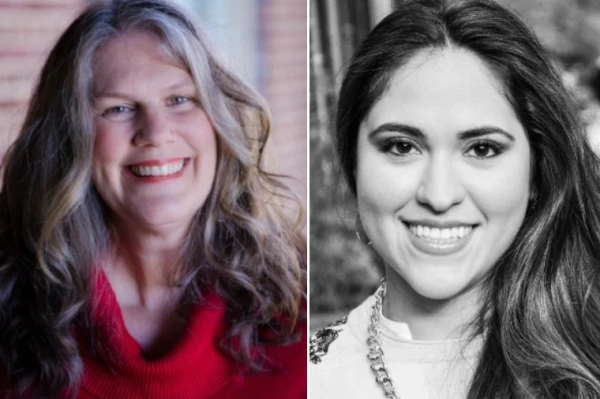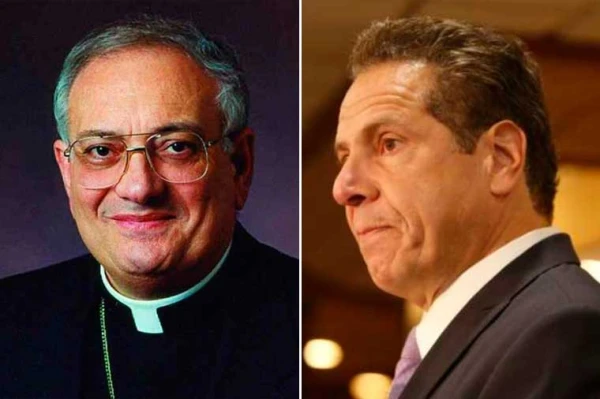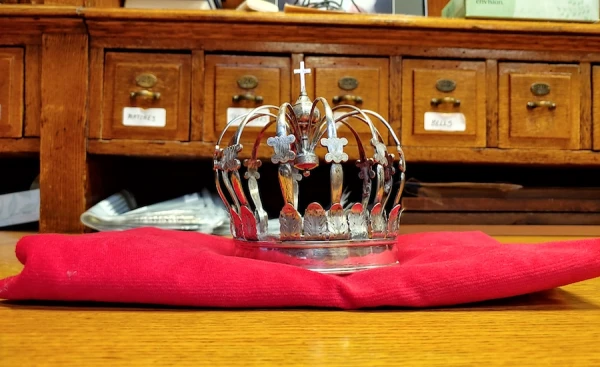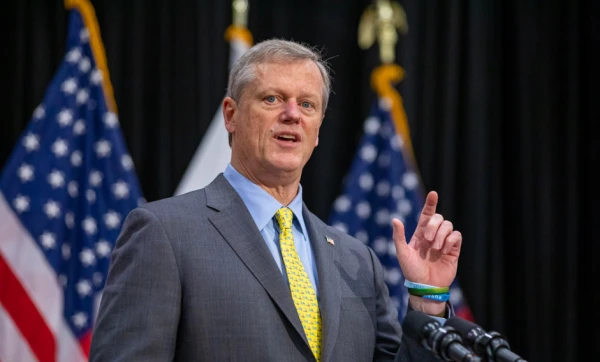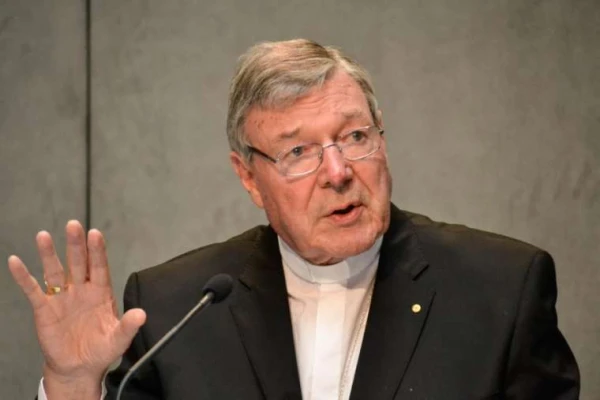
‘Canceled’ radical feminists and the Catholic Church: These unlikely allies believe women are female
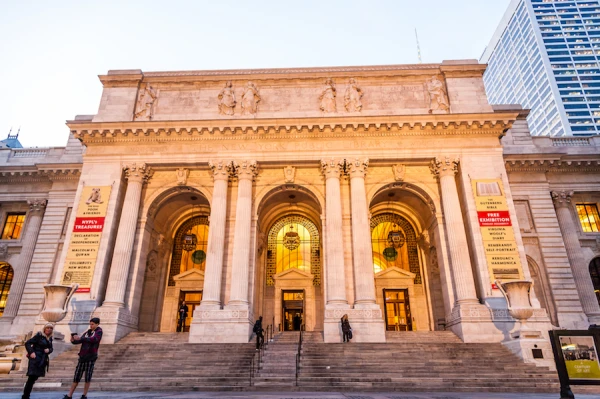
Washington D.C., Dec 30, 2020 / 11:25 am (CNA).- This article is the first part of a two-part series on the Church, gender-critical feminists, and transgender ideology. Part two can be found here.
Mary Kate Fain doesn’t agree with the Catholic Church about anything. Or, nearly anything, at least. But she does agree with the Catholic take on gender and identity. And that’s cost her. A lot.
In July 2019, Fain wrote a piece critiquing non-binary gender identities. She questioned why so many of her female friends felt the need to shed their identities as women and to instead identify as “non-binary” – neither male nor female.
Fain published the piece on Medium, an online social publishing platform.
Not long after the article published, Fain was fired from her job as a software engineer. She claims her viewpoints are the reason she was let go.
“I guess one of my coworkers complained about the article and I was fired. And since then it just started the slew of cancellation,” Fain told CNA.
“I was canceled from conferences, and canceled for multiple groups that I was a volunteer in, et cetera. And it just really highlighted to me that they all wanted to shut me up, but what it proved was that there really is a need for a place for women to be able to say this.”
Since her firing, Fain, a millennial and freelance writer living just outside of Houston, founded 4W, an online publication that publishes articles analyzing radical feminist issues such as gender, male violence, sex positivity, and the portrayal of women in media. She is also co-founder of the feminist social media platform Spinster.xyz, and a volunteer with the Women’s Human Rights Campaign.
And she is just one of many “canceled” women.
Why women are being “canceled”
Fain, along with several other women writers, intellectuals, and activists, have been “canceled” for their conviction that women are adult human females, whose sex-based rights, such as the right to female-only spaces like bathrooms or sports teams or therapy groups, deserve protection.
This view is no longer seen as politically correct by some tastemakers and gatekeepers, because it is “trans-exclusionary” – to hold this view means to hold that a man cannot “become” a woman because he identifies as one, and vice versa.
“…this is not something that you’re supposed to say,” Fain said. “We’re supposed to just blindly accept what anyone says about their own identity, without any critical analysis, without any feminist analysis even. We’re supposed to ignore that sex-based oppression exists and just admit, ‘Oh yes, we are what we say we are and that defines our reality.’”
“But I think for any feminist, any real feminist, we know that that just simply isn’t true,” she added.
“Our sex does define certain aspects of our reality, and people are not allowed to say that in today’s day and age.”
Many women who hold this view refer to themselves as radical feminists, trans-exclusionary radical feminists or gender critical feminists, or even “canceled women.”
“Cancel culture” is a relatively new term, used to describe the phenomenon that happens when someone, usually a famous person or one with some kind of platform, experiences a kind of shunning, harassment, or social banishment for doing or saying something with which a lot of people disagree.
Being “canceled” can take many forms: being trolled or doxxed on social media, being banned from Twitter or other platforms, or finding that events featuring the canceled person are quickly, well, canceled.
In January, an event entitled “Evening with Canceled Women” was canceled by the New York Public Library, where the event was to be hosted.
The canceled event was organized by Women’s Liberation Front (WoLF), a group that advocates for the “rights, privacy and safety of women and girls, by which we mean human females,” Kara Dansky, a board member with WoLF, told CNA.
“We were being told over the course of a week that the contract was being processed (for the event), and then the day before the deposit was due, we were told that we could not proceed with the event and we were not given a reason,” Dansky said.
The event would have included the voices of women “who have, in one way or another, been silenced or canceled as a result of their outspoken views on behalf of women and girls,” she added.
For example, the event would have featured Canadian feminist Megan Murphy, an advocate against pornography and prostitution whose insistence that women are female got her banned from Twitter, Dansky said.
It would also have included Posie Parker, a UK feminist known “for her insistence that the word woman means adult human female, which is simply the dictionary definition of the word,” Dansky said. Parker has also been banned from Twitter for her views.
The event also would have featured Linda Bellows, a Briton “who speaks on behalf of lesbian rights. And she has been told that it is transphobic to insist that lesbians are women who are attracted to women,” Dansky said.
These canceled women join a slew of others, with particularly high numbers in the UK, where the 2004 Gender Recognition Act lets adults register their gender as something other than the biological sex with which they were born.
Common ground with the Catholic Church
While trans-exclusionary radical feminist women typically hold many views with which the Catholic Church disagrees, such as approval of abortion and gay marriage, they share common ground in the belief that women are female and men are male – and they are born that way.
“It has been a tremendous plus to have radical feminists speaking out so strongly about the reality of sexual difference and against the new tyranny of gender,” Mary Rice Hasson, the Kate O’Beirne Fellow in Catholic Studies at the Ethics and Public Policy Center in Washington, D.C. and director of the Catholic Women’s Forum, told CNA.
“Although we disagree about many things – most significantly about abortion-– we agree on some important truths about women,” she said, such as opposing violence and exploitation against women, as well as “the importance of acknowledging the reality of sexual difference and the dangers of the transgender agenda.”
“Specifically, we agree that sexual difference is real, that males and females are different in significant ways, and that a person’s sex cannot change,” Hasson said.
“The Church’s vision of the human person differs radically from gender ideology,” Hasson noted. “Christian anthropology teaches that the person is a unity of body and soul, that we are created male or female, forever.”
“Gender ideology, in contrast, imagines the person as a bundle of assorted dimensions,” she said, such as gender identity, gender expression, sexual orientation, and biological sex, none of which “needs to align – the person is self-determining. God is really not in the driver’s seat.”
Fain said she agrees that gender identity, “this idea that we have an internal sense of being male, female or neither, and that this has any effect on our material reality, is nonsense.”
Dansky, whose group’s primary goals are to fight violence against and exploitation of women in rape, sexual and domestic assault, and pornography and prostitution, said that her work is made nearly impossible in the context of broad social disagreement about what makes someone a woman in the first place.
“It’s very difficult to solve all of those problems when we’re not permitted to name the category of women,” she said.
“It’s very interesting to me that when our society talks about domestic violence and rape and sexual assault, and we talk about the rampant rates of these crimes being perpetrated against women and girls, everybody knows what the words ‘women’ and ‘girls’ mean.”
In light of increasing acceptance of transgender ideology, the Vatican’s Congregation for Catholic Education’s issued a document entitled “Male and Female He Created Them” in June 2019, explaining the Church’s teaching on transgender issues and encouraging dialogue with those experiencing gender dysphoria.
The document cited the need to reaffirm “the metaphysical roots of sexual difference” to help refute “attempts to negate the male-female duality of human nature, from which the family is generated.”
Such a negation “erases the vision of human beings as the fruit of an act of creation” and “creates the idea of the human person as a sort of abstraction who ‘chooses for himself what his nature is to be.’”
Theories of gender, whether moderate or radical, agree that “one’s gender ends up being viewed as more important than being of male or female sex,” according to the document, which also reflects on the role of gender theory in education and speaks of a “crisis” in any alliance between the school and the family.
“Although ideologically-driven approaches to the delicate questions around gender proclaim their respect for diversity, they actually run the risk of viewing such differences as static realities and end up leaving them isolated and disconnected from each other,” it said.
The document called for dialogue, and the protection of human and family rights. It also decried unjust discrimination and noted points of unity among people with different perspectives on gender ideology.
“Key allies“
Looking for concrete examples of common ground, Fain told CNA that she thinks that protecting the freedom of speech of those who oppose transgenderism will be one of the most important things that radical feminists and Christians can work together for.
“(W)e need to deal with this freedom of speech issue that’s happening and cancel culture, which is making most people terrified to speak out on the issue,” she said.
Fain noted that when she wrote the controversial article that got her fired, she had anticipated the backlash and had been saving for months to protect herself from the blow. She recognized that most people cannot afford to lose their jobs for speaking up on this issue.
“Most people can’t, and especially women who are already at a financial disadvantage are more likely to be caring for kids,” she said.
“And people are terrified to speak out on this issue because of the serious economic consequences that are happening.”
“And although I have many issues with the right in general, I will say that I think religious freedom and freedom of speech do go hand in hand,” Faid added.
“And so the Church’s work on that is probably relevant here.”
Hasson identified women like Fain as “key allies” in the fight against transgenderism going forward, and said she looks forward to working with them despite differences on other issues.
“Radical feminists have been fearless in speaking the truth about sexual difference – over social media, at universities, and in public hearings. They have refused to be silenced – even after being ridiculed, ‘de-platformed’ at public universities, or having their Twitter accounts shut down,” Hasson said.
“We differ greatly about abortion and our views of men, but I am hopeful that our work together and personal regard for each other will open up some opportunities in the future for discussions about those areas where we disagree. But for now, I’m grateful for their commitment to speak the truth, even at great personal cost.”
This article was originally published on CNA Feb. 10, 2020.


